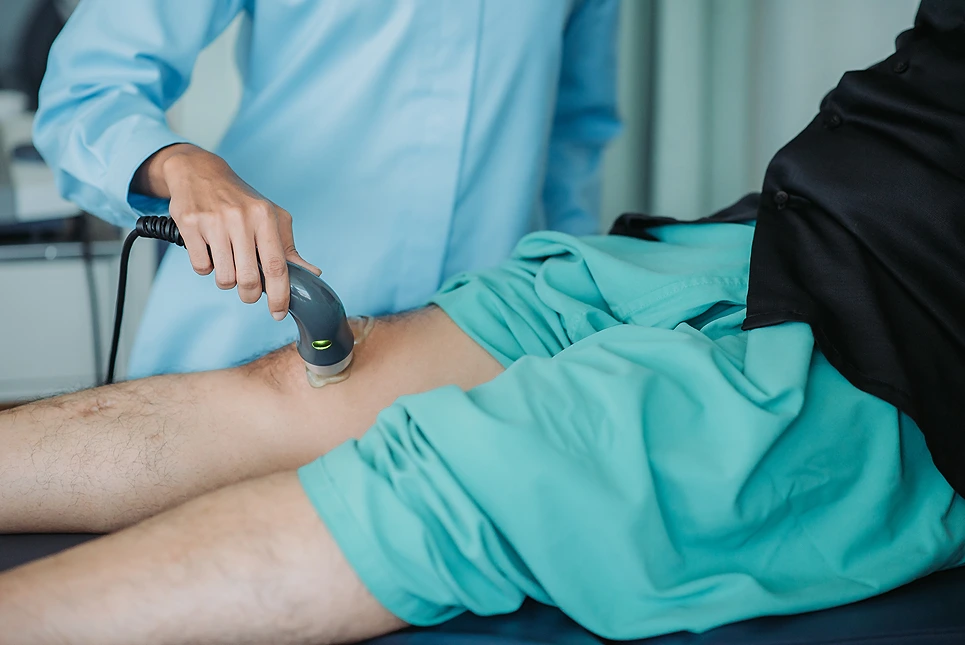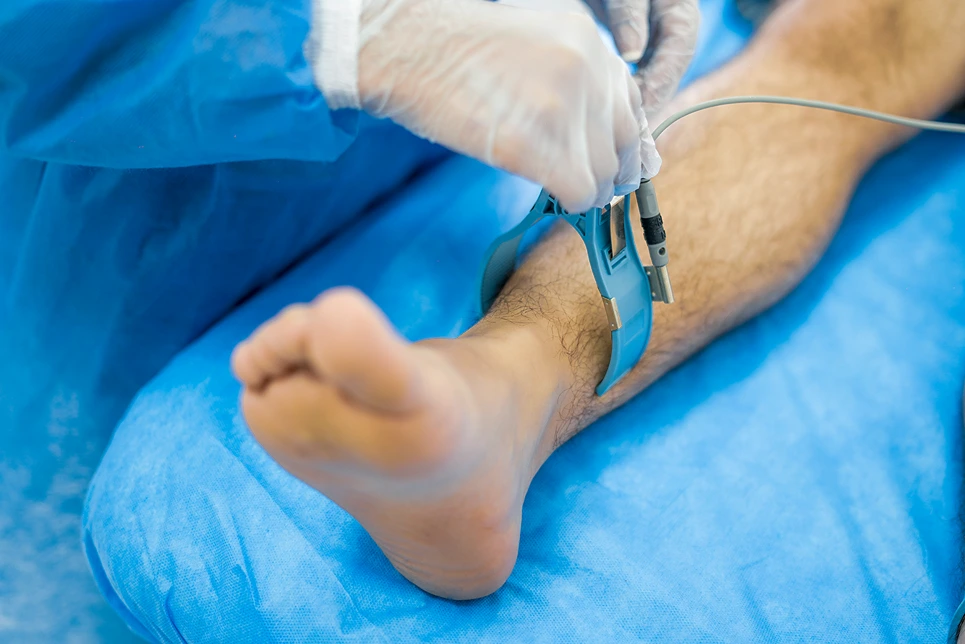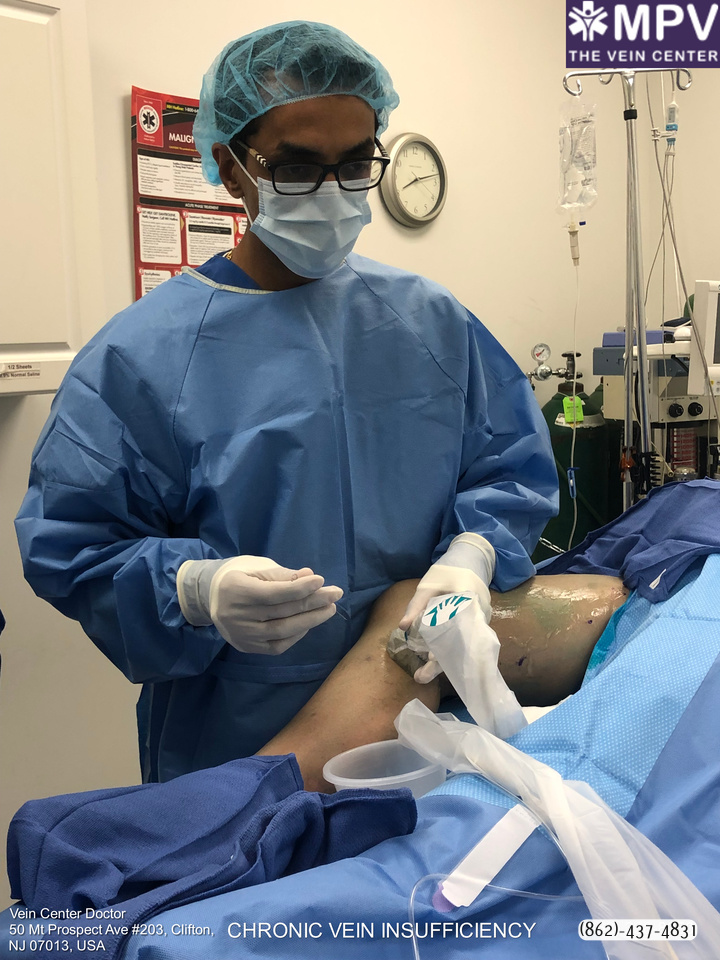
Chronic venous insufficiency (CVI) causes annoying and sometimes painful symptoms in the legs like swelling, heaviness, achiness, throbbing, tiredness, itching, and even skin changes or ulcers in severe cases. If you experience these issues, it likely indicates a problem with your leg veins’ ability to efficiently pump blood back to your heart.
At The Vein Center Doctor, our team of skilled vein specialists offer compassionate care and advanced treatments to help patients find relief from CVI. Read on to learn what causes chronic venous insufficiency, its symptoms, and how our treatments can get your blood flowing properly again.
Experience Relief From CVI Symptoms and Regain Healthy Circulation in Your Legs With Personalized Treatment Plans From The Vein Center Doctor
Living with unwanted veins is a thing of the past, when you can simply schedule a free consultation with Vein Center Doctor and find your ideal solution today.
Chronic venous insufficiency refers to a long-term condition where the leg veins struggle to pump blood upward against gravity. Recent studies suggest that approximately 70% of patients are affected by this condition. It develops when the one-way valves inside the veins are damaged, often from blood clots, chronic inflammation, or simply weakening with age.
With CVI, blood pools in the lower veins instead of flowing smoothly to the heart. This stagnant blood builds up pressure and strains the vein walls. Over time, symptoms emerge signaling impaired circulation and venous hypertension in the legs.
CVI cannot be cured, but the right treatment can help restore proper blood flow, alleviate symptoms, improve appearance, and prevent complications like leg ulcers. Getting an accurate CVI diagnosis early is key. The Vein Center Doctor uses leading-edge imaging and diagnostic methods to pinpoint the cause.
The hallmark symptom of CVI is swollen, achy, and tired legs that may worsen over the day and improve with rest and elevation. Other possible symptoms include:
If you regularly experience any of these symptoms, schedule an appointment with our vein care experts. We'll perform advanced imaging tests to check for venous reflux, blood pooling in the veins, vein blockages, or weakened valves. Catching CVI early provides more treatment options to stop it from worsening.
Chronic venous insufficiency arises when the veins in the legs are unable to efficiently pump blood back up to the heart. There are several underlying causes that can lead to faulty veins and improper blood flow:
Veins have small leaflet valves that normally open to allow blood to flow upward, and close to prevent backflow. When these valves become damaged, blood can flow backward and pool in the veins. This backward flow is called venous reflux. Valve damage is the most common cause of CVI.
A blood clot in the deep veins, known as deep vein thrombosis (DVT), causes inflammation and scarring. This can permanently damage the valves and vein walls. The resulting condition is called post-thrombotic syndrome, a common cause of CVI.
Chronic inflammation of the vein walls, or phlebitis, can damage valves over time. Any condition that triggers ongoing inflammation increases CVI risk.
The twisted, enlarged veins of varicose veins have faulty valves that allow backflow. Varicose veins often accompany CVI and lead to symptoms like leg swelling and achy, tired legs.
Some individuals are simply born with thinner, weaker vein walls that are prone to problems like enlargement and valve damage. This congenital issue makes them more susceptible to varicose veins and CVI.
Carrying excess body weight puts increased pressure on the leg veins. This added pressure can gradually cause valve and wall abnormalities, raising CVI risk. Losing weight can help prevent CVI in obese patients.
Vein valves and walls naturally weaken and lose elasticity with aging. Older adults are therefore at the highest risk of developing chronic venous insufficiency.
Jobs or activities that involve standing still for long periods of time can contribute to CVI over time. The veins have to work harder against gravity when standing.
Any direct trauma or injury to a vein can potentially damage the valves and walls, leading to CVI.
Genetics appear to play a role, since having a parent with chronic venous insufficiency increases your risk. Inherited vein valve defects and weak vein walls may be passed down.
Learn About the Underlying Causes of CVI and How Our Advanced Treatments at The Vein Center Doctor Can Address Them Effectively

Since people with CVI often have no symptoms in the early stages, diagnosis generally involves these imaging tests:
| Test | Description |
| Duplex Ultrasound | This uses sound waves to check blood flow, valve function, and whether veins are blocked or narrowed. It can pinpoint areas of reflux. |
| Plethysmography | Measures leg vein function and detects blood pooling in veins. Helpful for quantifying CVI severity. |
| CT or MR Venography | Advanced cross-sectional scans that create images of the leg veins in detail. Can spot problem areas. |
| Venous Pressure Measurements | Manometer tests measure blood pressure in the veins. High pressure indicates poor drainage. |
Our facility uses state-of-the-art technology and robust diagnostics so we can confidently determine the cause and extent of your CVI. Accurate diagnosis drives proper treatment.
The Vein Center Doctor offers the latest minimally invasive treatments that target the source of your venous problems and restore healthy circulation in your legs.
Treatment options include:
Sclerotherapy is a minimally-invasive procedure that involves injecting a sclerosing agent solution or suspension directly into the damaged vein. This causes the vein to scar and seal off. Blood is then re-routed properly through healthier veins. Over weeks, the treated veins fade away.
VenaSeal uses an FDA-approved medical adhesive or “glue” to close the damaged vein. This procedure allows patients to return to work the next day and is the only varicose vein procedure that does not require wearing compression stockings afterward.
Venous Compression Therapy improves blood flow in the lower extremities. Compression devices can complement treatments for various venous conditions like varicose veins, spider veins, and chronic venous insufficiency.
Radiofrequency Ablation (RFA) is a minimally invasive treatment that uses electricity to heat and collapse unhealthy veins to seal them off completely.
Thanks to major advances in the field of phlebology, minimally invasive vein treatments are highly effective at managing chronic venous insufficiency. We thoughtfully create a customized treatment plan based on each patient's needs and goals.
Take the First Step Towards Improved Circulation and Comfort in Your Legs. Call Us at 1-862-500-4747 to Schedule Your Personalized Treatment Plan.

Here's an overview of what to expect when having a procedure to treat chronic venous insufficiency at The Vein Center Doctor:
Our caring team strives to make your experience as smooth and painless as possible. Don't hesitate to communicate any needs or concerns.
Don’t let chronic venous insufficiency disrupt your everyday life any longer. The Vein Center Doctor has the skill and experience to get your circulation flowing smoothly again. Contact us at 1-862-500-4747 today or book your online consultation!
Find exactly what you need to get rid of your vein-related problems. Dr. Sood and the rest of our team at Vein Center Doctor are ready to help: schedule your free consultation today.
Most Insurance is accepted for treatment